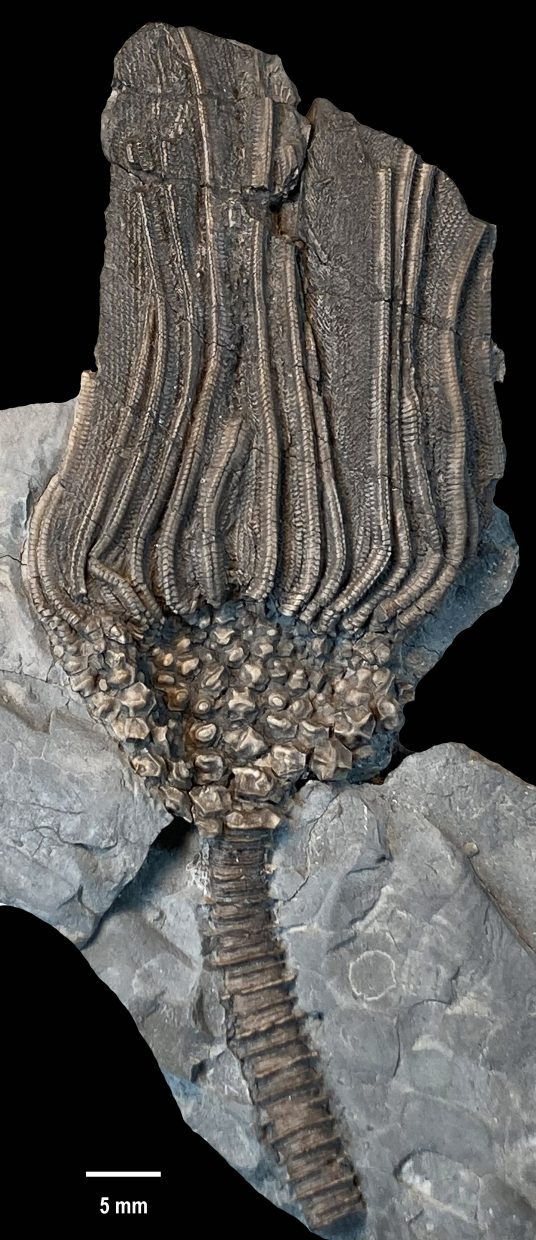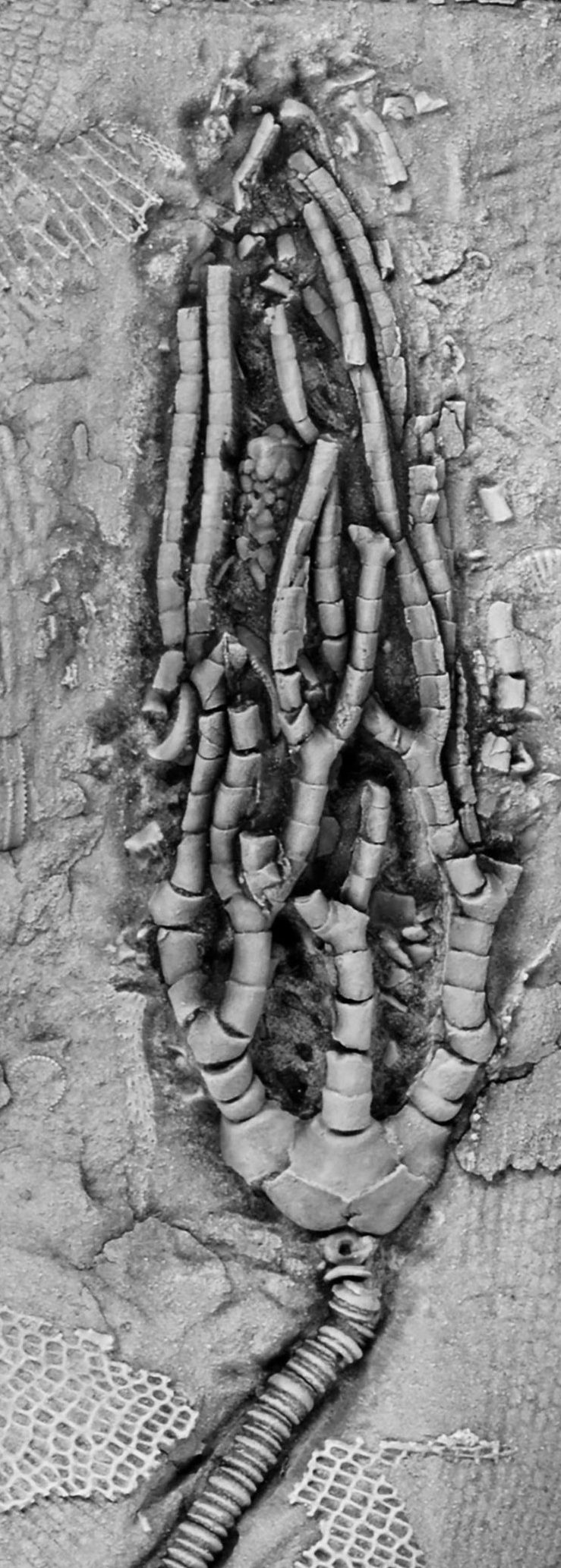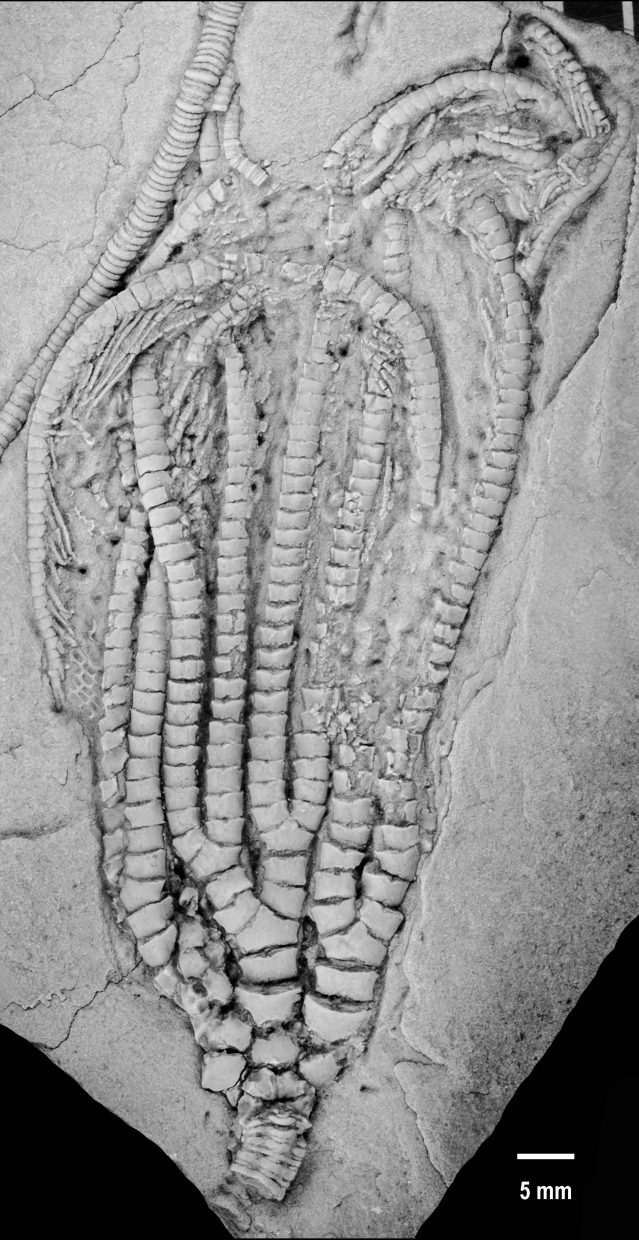Crinoids from the Wooster Shale Member of the Cuyahoga Formation, Carboniferous (Mississippian, Tournaisian) of Northeastern Ohio
William I. Ausich and Mark A. Wilson
The Mississippian is recognized as the “Age of Crinoids” with well-known crinoid-bearing deposits worldwide from many ancient depositional environments. Ausich and Wilson report an unexpected new Mississippian crinoid occurrence in the Wooster Shale (Tournaisian) of northeastern Ohio. Unexpected because Wooster Shale crinoids are exquisitely preserved in a shale, and shales are not typically recognized as deposits formed through episodic burial events that can provide the ecological snapshot required for complete crinoid crown preservation.
Today, fossiliferous Wooster Shale exposures are confined to small, poorly exposed stream cuts, and the primary localities are now abandoned shale pits quarried for making bricks. The majority of crinoids were collected over the years by numerous College of Wooster students and faculty and by avocational paleontologists. Collections available for study were from the College of Wooster, Cleveland Museum of Natural History, and the Orton Geological Museum at Ohio State University.
Although a low diversity fauna, with only nine taxa known, five species are new, including Cactocrinus woosterensis n. sp., Cusacrinus brushi n. sp., Agaricocrinus murphyi n. sp., Decadocrinus laevis n. sp., and Decadocrinus inordinatus n. sp. Comparison of the crinoids from the Wooster Shale versus the slightly older Meadville Shale (both members of the Cuyahoga Formation) follows the prediction for species longevities among Mississippian crinoids, with all Wooster Shale new species from clades regarded as having narrower niche breadths and shorter longevities.
Another unusual aspect of the Wooster Shale crinoids is that many of the specimens are preserved in association with siderite. Crinoids are replaced by siderite, preserved in beds of siderite, and preserved in discrete siderite concretions. The latter, especially, is a rare form of preservation for crinoid crowns.









